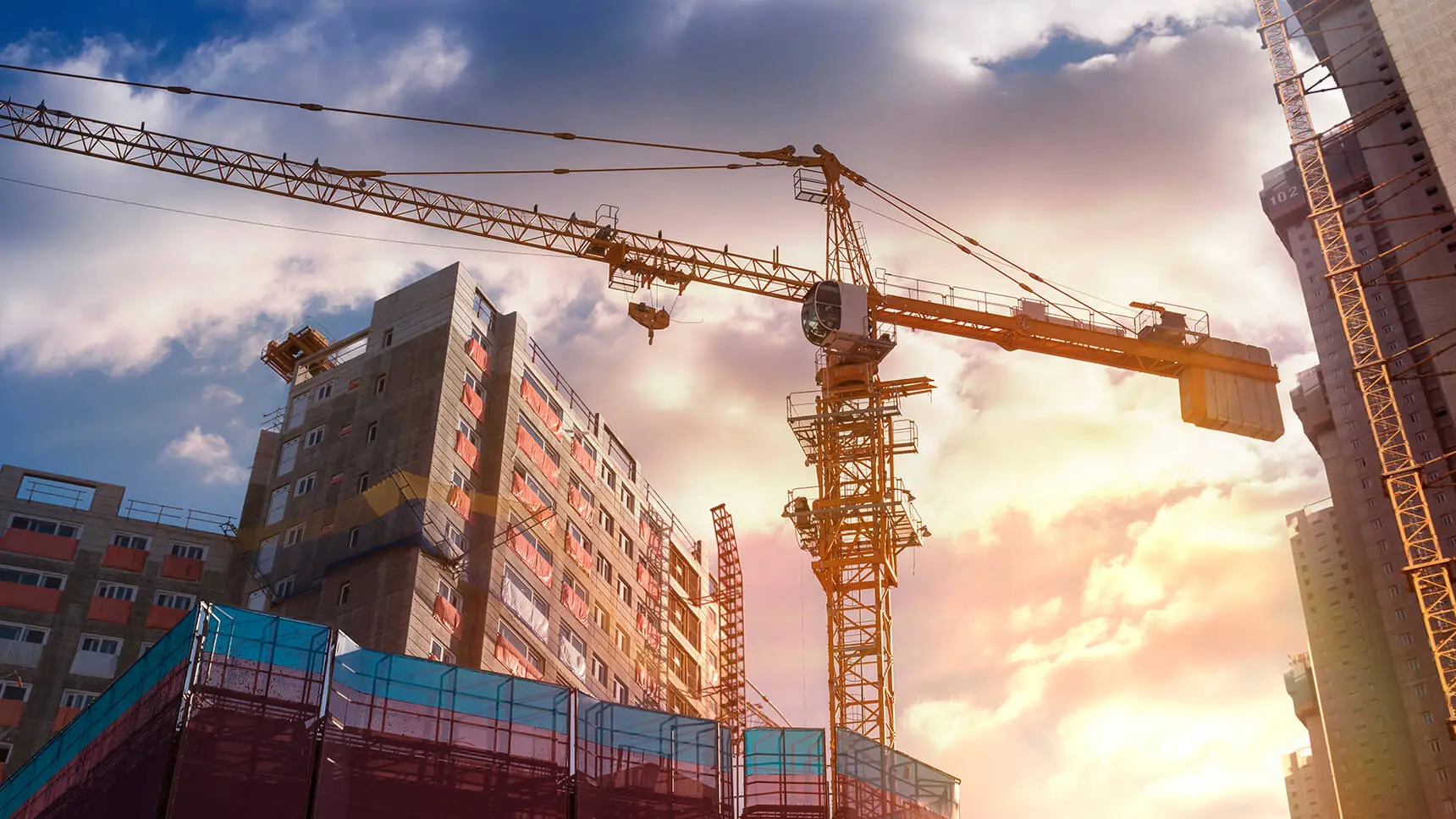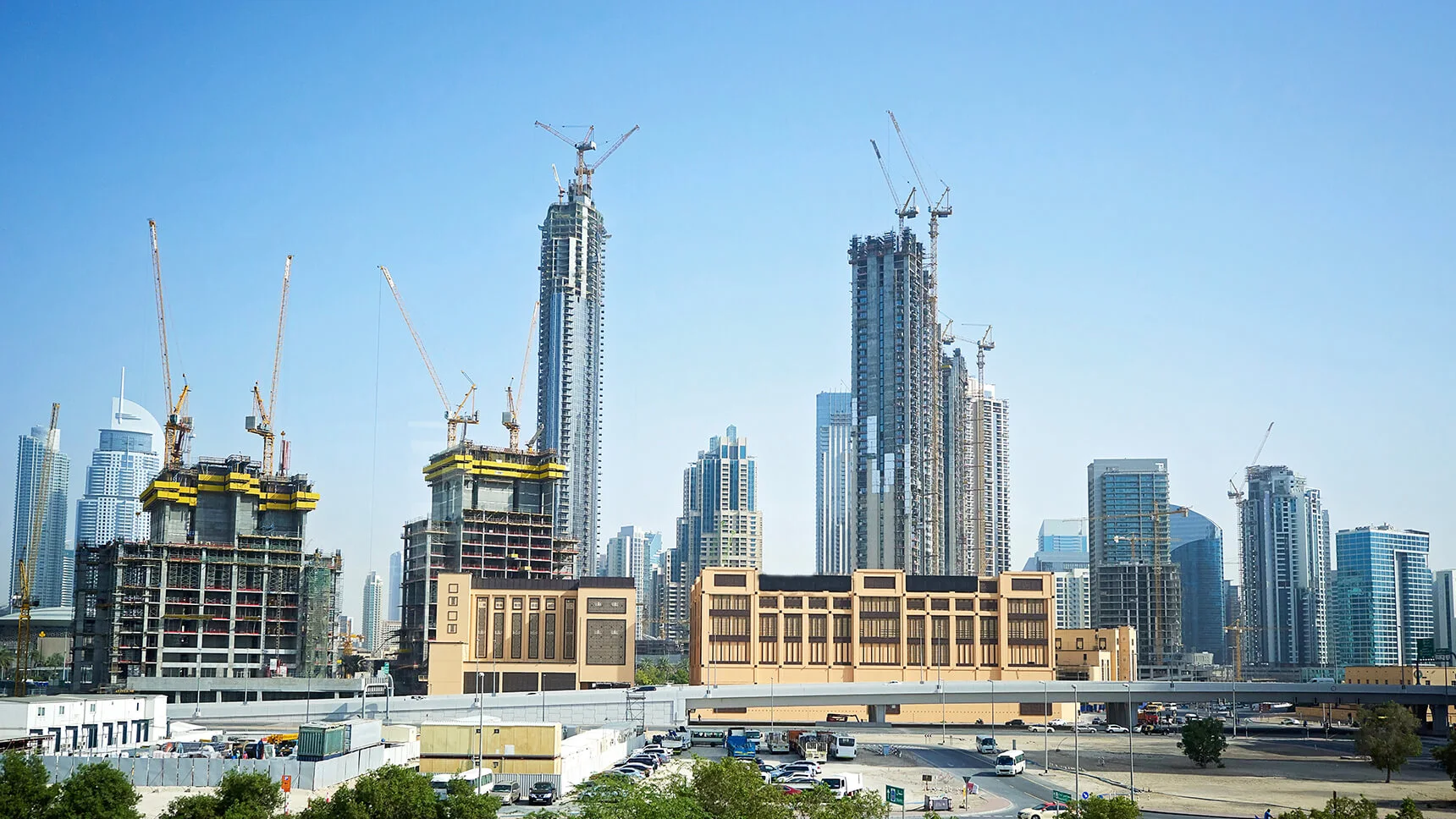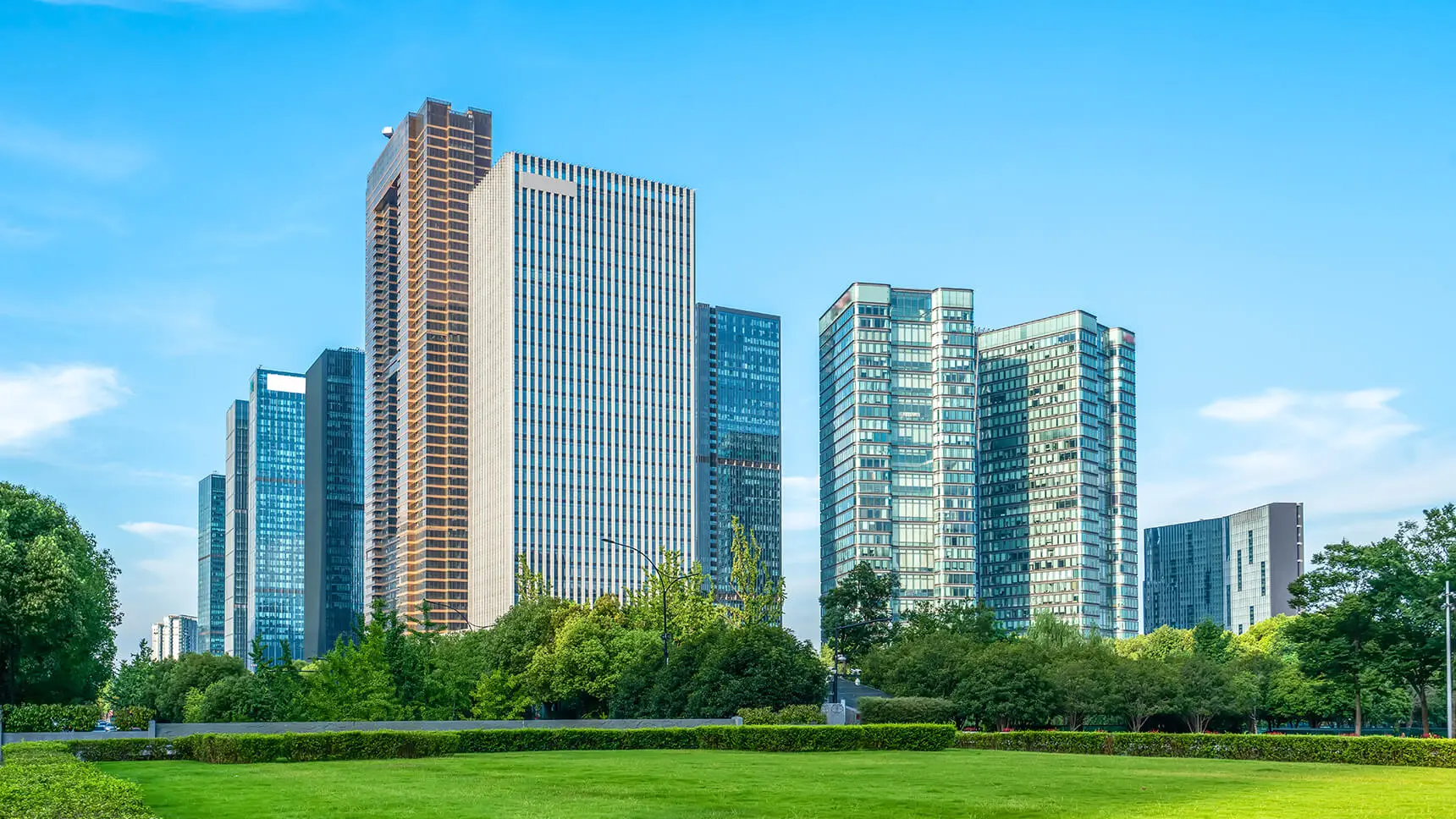Your Partner
in Legal Success
| Reading Time: 12 Minutes
Urban Transformation as a Strategic Future Projection

What is urban transformation? What are the aims and conditions of urban transformation? These questions have been among Turkey’s most curious and searched questions in recent years. The fact that the subject has different practical reflections on the public, private sector, and citizen levels makes answering these questions even more important.
On the other hand, an urban transformation has potential consequences that go beyond current practical applications. This potential is very important in terms of transforming our cities into smart cities of the future.
As MGC Legal, we wanted to deal with the main aspects of urban transformation, based on the importance of this potential, within the framework of a strategic future projection.
Earth’s Zero Point
There is a column erected on the side of the road, right across Istanbul’s Sultanahmet Square. The name of this 4th-century column, which is overlooked by most people, except those who know what it is, is the “Million Stone“.
The Million Stone was considered “Earth’s Zero Point” until the prime meridian’s position was changed to Greenwich in 1884. In other words, those living in Istanbul have resided in the “center of the world“, so to speak, for centuries.
Today, for almost everyone, the address of the center of the world is their home. Considering factors such as working conditions, transportation, and living conditions, such a self-focused perception is not surprising.
However, if it is considered that this result was achieved with uncontrolled growth, rapid urbanization, and unplanned construction caused by migration, when possible disasters are added to these, unfortunately, we cannot say that it will be very sustainable for many people to continue to live in their homes, which they perceive as the zero point of the world. Moreover, this applies not only to Istanbul but also to all settlements whose population mobility and settlement patterns are outside the natural flow of life for various reasons.
The areas under disaster risk in these settlements and the buildings in these areas, shantytowns, industrial areas, and agricultural areas that have remained in the growing city over time are not with an isolated approach; it should be considered as a whole within the framework of the changing and developing dynamics of each city. Only in this way can an urban design and renewal that will increase economic value by preserving the historical and cultural texture be established.
At this point, it is necessary to emphasize a study published by the General Directorate of Geographic Information Systems of The Ministry of Environment, Urbanization, and Climate Change in August 2021. In this study titled “Smart City Management Application Guidance Guide“, it is stated that local government units should examine urban transformation roadmaps together with the smart city vision. It was also pointed out that this would facilitate the application and be a pioneering approach worldwide.
In the most general terms, the smart city model aims to optimize all operational services, such as transportation, energy, water, waste management, education, and health, with the support of information and communication systems. It is aimed to ensure economic development and increase the quality of life by using resources effectively and efficiently with smart solutions. From this point of view, integrating urban transformation and smart city targets with each other with appropriate methods is at a critical point.
We can say that innovative technological developments and solutions, from the Internet of Things (IoT) to renewable energy, play a key role on the path to “Smart City Applications“, which is a separate article on its own.
In other words, every sledgehammer struck within the scope of urban transformation on buildings that represent the past, are risky, and have completed their economic life, carries us to the cities of the future. This is what requires considering current practical steps with future perspectives.
When it is understood that the center of the world should be sought in the whole city, which can be likened to an organism in the conditions of our age, the first pillar of a sustainable city model in which it is possible to participate in all stakeholders in the future will be erected, just like the Million Stone, which has existed and stood for centuries.

What is Urban Transformation?
We emphasized above how important it is to define urban transformation as a strategic future projection with goals like sustainability, smart cities, and renewable energy. To put it another way, only in this manner will the actions taken in practice in accordance with the national and local level urban transformation strategy documents make sense and make it possible to accomplish the goal.
This purpose is stated in the first article of Law No. 6306 on the Transformation of Areas Under Disaster Risk, which is known as the Urban Transformation Law in public;
“…improvement, liquidation, and renovations in areas under disaster risk and on plots and lands outside these areas where risky structures are located, in order to create healthy and safe living environments per the norms and standards of science and art…”
Statements are expressed.
When Law No. 6306 is examined, it can be seen that urban transformation involves more detailed and complicated processes rather than demolishing and rebuilding a building. All these legal regulations regarding urban transformation are aimed at a systematic and planned public activity in which a building that has completed its economic life or is in danger of collapse and parts of the city that are determined as risky areas in terms of possible disasters will be re-evaluated within a project. In addition, the parts of the urban fabric that have become old and deteriorated over time are reviewed under the main objectives of the development planning activities.
The activities defined as “improvement, liquidation, and renewal” in the Law have two basic criteria; to minimize possible loss of life and property and to transform the city in the light of scientific and aesthetic values. These two criteria and all legal procedures and principles clearly express what urban transformation means in practice. In other words, the answer to what urban transformation is, from a single building to be demolished and rebuilt to newly designed and built collective settlements, is hidden in these two criteria.

What Are Risky Buildings and Risky Areas in Accordance With Urban Transformation?
The openness of social consciousness is of great importance in an issue that has an impact on the future of the country and individual individuals simultaneously and to such an extent, especially in the definitions of “risky building” and “risky area” that require urban transformation.
At this point, the first question that needs to be answered is what they are not rather than what they are because the definitions of a risky building that are widely used in everyday language can be confusing.
To give an example to those mentioned above, the word “rotten“, which is frequently encountered in relation to urban transformation. This definition may seem self-explanatory for buildings with bending, significant collapse, or cracks that make them dangerous to live in. However, it also creates the illusion that all risky structures can be perceived with the naked eye.
This situation causes buildings in regions with renewed exterior cladding or entrances paved with ostentatious stones to be considered solid. However, the deception of visuality has no jurisdiction over the scientific and legal dimensions of urban transformation.
Whether a building is risky or not can only be understood with the technical data obtained as a result of scientific tests. In other words, scientific data is sufficient to understand whether a building is risky, requiring no further interpretation.
Law No. 6306 also includes the risky structure as;
“A structure inside or outside the risky area that has completed its economic life, or is at risk of collapse or severe damage, which is determined based on scientific and technical data.“
Data such as the structure of the ground in the area, concrete sample tests, the diameter and number of the iron used and their spacing, and the properties of the columns and beams can be counted among the “scientific and technical data“.
As stated in the Law, as a result of these tests, a risky structure can be determined for structures, not in a risky area.
The designation of a specific area of the city as one that “has the risk of causing loss of life and property due to the ground structure or the construction on it” is based on two scientific reports, according to the Law of that area of the city. The implementation Regulation requires the technical report describing the risk and the geological survey report if the risk is related to the ground structure.
Based on these reports and other necessary documents, there is no need to make a separate risk assessment for each building in areas declared as risky areas. This situation is critical in projecting island-based applications in urban transformation, especially in areas where adjacent settlements are common.
Nevertheless, it is possible to exclude a structure that is found to be risk-free in a risky area. However, for the sake of the project’s integrity, if necessary, the risk-free building can be demolished and included in the urban transformation due to agreements with the owners. It is also necessary to develop case-specific legal solutions for such examples, which are likely to have very different characteristics.

What Are The Detection, Approval, and Objection Processes For Risky Buildings?
In accordance with Law No. 6306, the application of one of the owners of the building or one of their legal representatives is sufficient for a risk assessment investigation. In the process, which will be carried out per the procedures and principles specified in the Law’s Implementation Regulation, the necessary tests are carried out by the institutions and organizations licensed by the Ministry of Environment, Urbanization and Climate Change, while the applicants cover the costs.
Suppose the building is found to be risky as a result of the tests. In that case, the risky building detection report is sent to the relevant Provincial Directorate of Environment, Urbanization, and Climate Change. If the directorate does not see any deficiencies in the examined report, it annotates to the relevant land registry directorate. With the risky construction annotation about the building entered in the land registry, a process that the owners must follow carefully begins.
Risky building detection is notified to all real and personal rights holders in the building by Notification Law No. 7201. Any of the owners have the right to object to the determination within 15 days from the date of notification. If no objection is made, the building must be demolished within the time allowed by the local-level Administration authorized by Law.
The technical committee evaluates the objections of the owners or their legal representatives to the Provincial Directorate of Environment, Urbanization, and Climate Change. If the committee examines the risky structure detection report and rejects the objection with a decision containing its technical reasons, the report becomes final.
Since a new objection to be made by another owner will not be valid, the urban transformation process continues without re-examination. On the other hand, tenants do not have the right to demand or object to the risky structure determination.
The Ministry may also ask the owners or the relevant municipality to determine whether the building is risky or not. If the determination is not made within the allotted time, it is carried out by the relevant Ministry or Administration. The demolition decision is notified to the owners and tenants. The minimum time limit for demolition, both in the first notification and after the objection, is 60 days.
Although there is no legal obstacle to the sale of risky buildings, the risky building annotation in the land registry will cause the appraisal value to be low. In this respect, the completion of the urban transformation process for sale is in favor of the owners.
According to the Principles Regarding the Detection of Risky Buildings in Annex-2 of the Implementation Regulation;
“…Buildings whose structural integrity has been disrupted statically due to dereliction or any other reason cannot be subject to risky building determination.“

Is There Any Option Other Than Demolition For A Risky Building?
Retrofitting can also be done for a building determined to be at risk. The crucial issues in this regard are specified in the Implementation Regulation of Law No. 6306.
First of all, it must be proven that retrofitting is technically possible. Pursuant to article 19 of the Condominium Law No. 634, a license must be obtained following the Zoning Legislation for the retrofitting project, which is prepared by the majority decision covering 4/5 of the owners. After the strengthening is completed within the given time, an application is made to remove the risky structure annotation in the land registry.
It is useful to take into account the economic life of the building when making the retrofit decision. While this option works to save the day, other problems will likely arise in the building over time, despite the retrofit. Therefore, it is recommended that the ratio of the retrofit cost to the reconstruction cost should be, at most, the 40% threshold.
If the owners do not consider the retrofit option, they have to carry out the demolition of the building within the 60 days given to them. If the building is not demolished within this time, an additional 30 days will be granted.
Suppose the demolition is not carried out again. In that case, the risky building is demolished following the evacuation of people and goods by the competent authorities, which is acted on in accordance with the Implementation Regulation to maintain the urban transformation process. The owners must pay demolition costs.

How Does The Urban Transformation Process Proceed After The Demolition of The Risky Building?
After demolition, a decision has to be made by the owners regarding the process of rebuilding the building. There is a list of licensed contractor companies on the Ministry of Environment, Urbanization, and Climate Change website.
To whom and under what conditions the building will be rebuilt among the bidders is decided by the “Building Joint Decision Protocol” as a result of the owners’ meeting, which must be held within 30 days after the demolition. The majority required for a decision is 2/3. As the risky building is demolished, the real estate in question will now be considered as land, and the land share ratio of the owners determines the vote weights.
Related Article: Key to Bring Down The Prices of Housing: Application of “Golden Land Share”.
Reconstruction of the building and other decisions that can be taken outside the contractor company may also be in question at this meeting. It can be decided with a 2/3 majority that the parcel where the demolished building is located should be combined with the adjacent parcels or divided into separate parcels and the necessary agreements to be included in the urban transformation projects based on the zoning island.
A notification is sent to the owners who do not participate in the meeting decisions, including the agreement terms made per the Building Joint Decision Protocol. If these owners do not sign the protocol and agreement within 15 days, their shares are put up for sale by auction to other stakeholders of the real estate.
If there is no demand from other stakeholders for the shares, the value of which is determined by the licensed valuation institutions operating under the Capital Markets Board (CMB) and not less than the current market value, the Ministry or the Administration registers the shares in the name of the treasury. The implementation of the urban transformation project, decided by a 2/3 majority in circumstances where the owners cannot achieve unanimous consent, can only be started after the sale or expropriation.
If the owners cannot conclude the decision they need to take with a 2/3 majority within 30 days with the Building Joint Decision Protocol, the Ministry or the Administration goes to an expropriation of the immovable immediately.
Related Article: Sales of Shares Within The Scope of Law No. 6306.

Bank Loans and Rent Support in The Urban Transformation Process
After selecting the contractor company, the owners can apply for loans to state banks and private banks that have contracted with the Ministry in accordance with the signed protocol to cover the cost of reconstruction. Applications are evaluated within the framework of the bank’s crediting procedures and principles, together with the protocol. The Ministry provides reimbursed interest support to the owners, whom the bank deems appropriate to give credit and notifies them.
The amount subject to the loan is not paid directly to the applicant. The relevant bank pays the contractor company as progress payment on behalf of the owner during the construction process. Payments are spread over time without being made in one go. The fact that the supervised process of payments is carried out together with the control of the building ensures that the owners are not affected by possible contractor changes due to various reasons or other adverse situations that will cause the construction to be interrupted.
The upper limit of the loans is on a per-person basis, and the maturity and principal grace periods vary. One of the factors of this variability is whether the activity is rebuilding, strengthening, or acquiring. In addition, whether the real estate in question is a residence or a workplace is also determinative in this regard.
It is also worth mentioning that owners of buildings that are accepted as urban transformation projects are exempted from notary, municipality, land registry, cadastral fees, inheritance, transfer, and stamp taxes.
In addition, the Ministry provides 18 months of rental support to the owners during the rebuilding process. Rental support amounts are determined on the basis of provinces divided into six categories throughout the country. It should be noted that rent assistance and loan interest support will not be provided for the same owner during the applications.
Rental support for two months is provided for once only to the tenants and owners of real rights in the building that was demolished due to the detection of risk. This support is also known as relocation support in the public.

Urban Transformation and Real Estate Law in Turkey
Real estate is one of the most dynamic sectors in Turkey. In terms of its scope, it concerns people from all walks of life without exception. From huge investments to the simplest lease agreements, both the processes and the parties are many and varied.
This situation causes conflicts at different levels and creates very productive solution partnerships and collaborations. Moreover, these relations and contradictions can be experienced between different wills, such as real persons, private companies, and public institutions.
All of these are the reasons why Real Estate Law in Turkey has to be elaborated in accordance with needs and updated when necessary. Let’s take into account that the issue can extend to special cases involving different branches of Law. We can understand how vital legal consultancy is in the field of Real Estate.
When the main aspects of urban transformation, which we can consider as a part of Real Estate Law, are detailed with projects, it will be seen that it requires special solutions. In addition, Law No. 6306 on the Transformation of Areas Under Disaster Risk, which is associated with more than 30 different laws, regulations, contracts, petitions, objections, commitments, and reports that shape urban transformation, supports this idea.
Related Article For Further Reading: Turkey’s New Tax Application on Accommodation Services.



